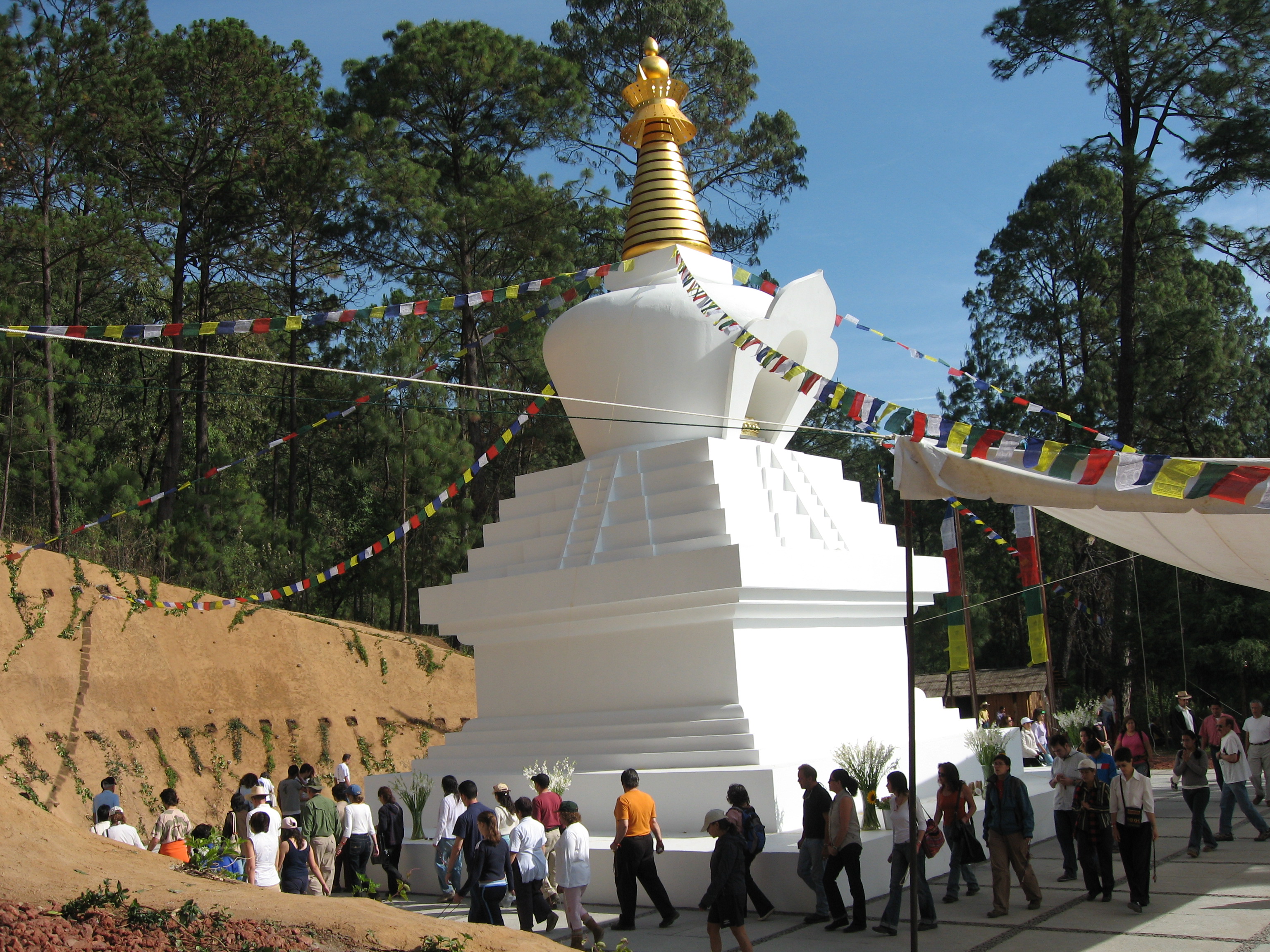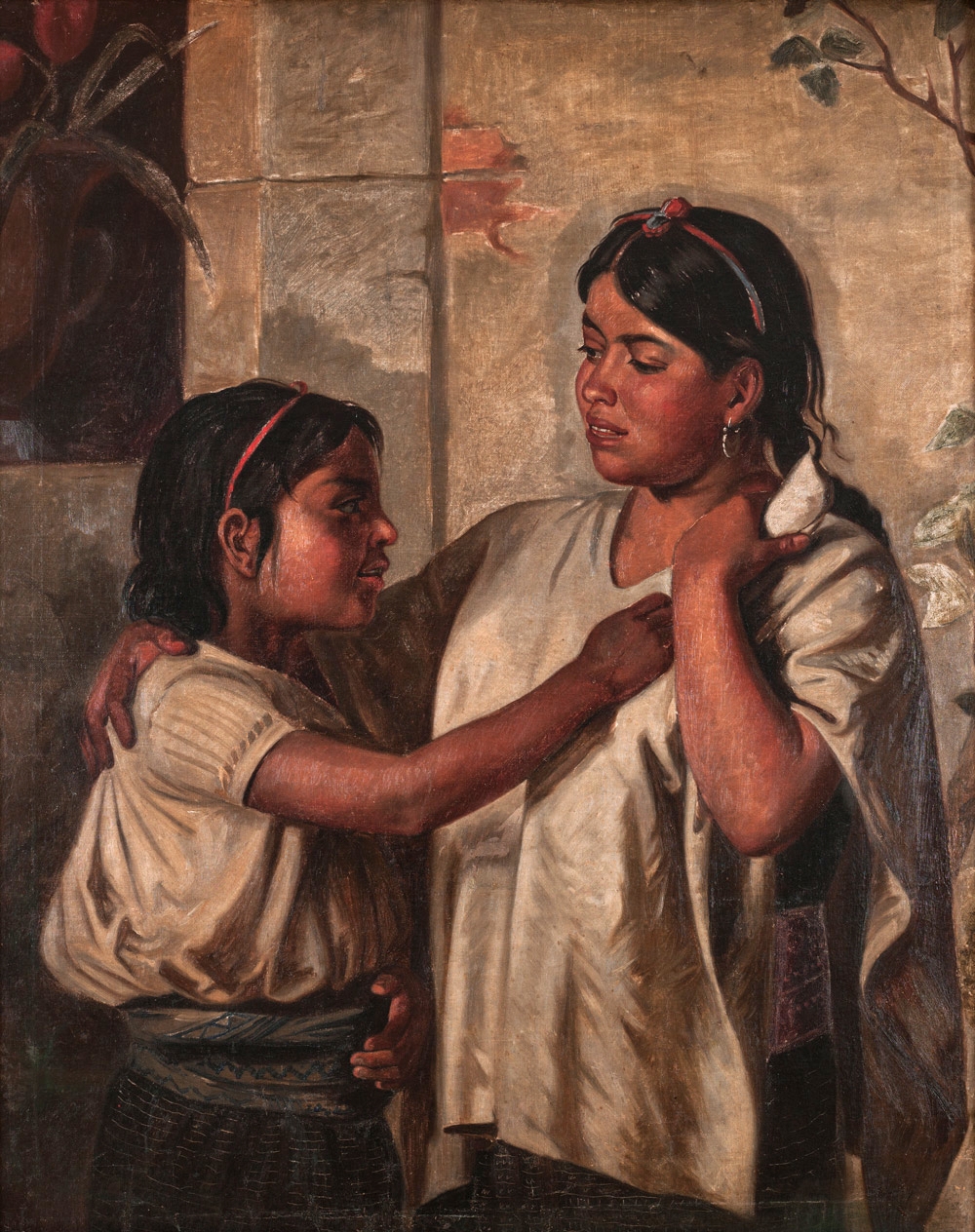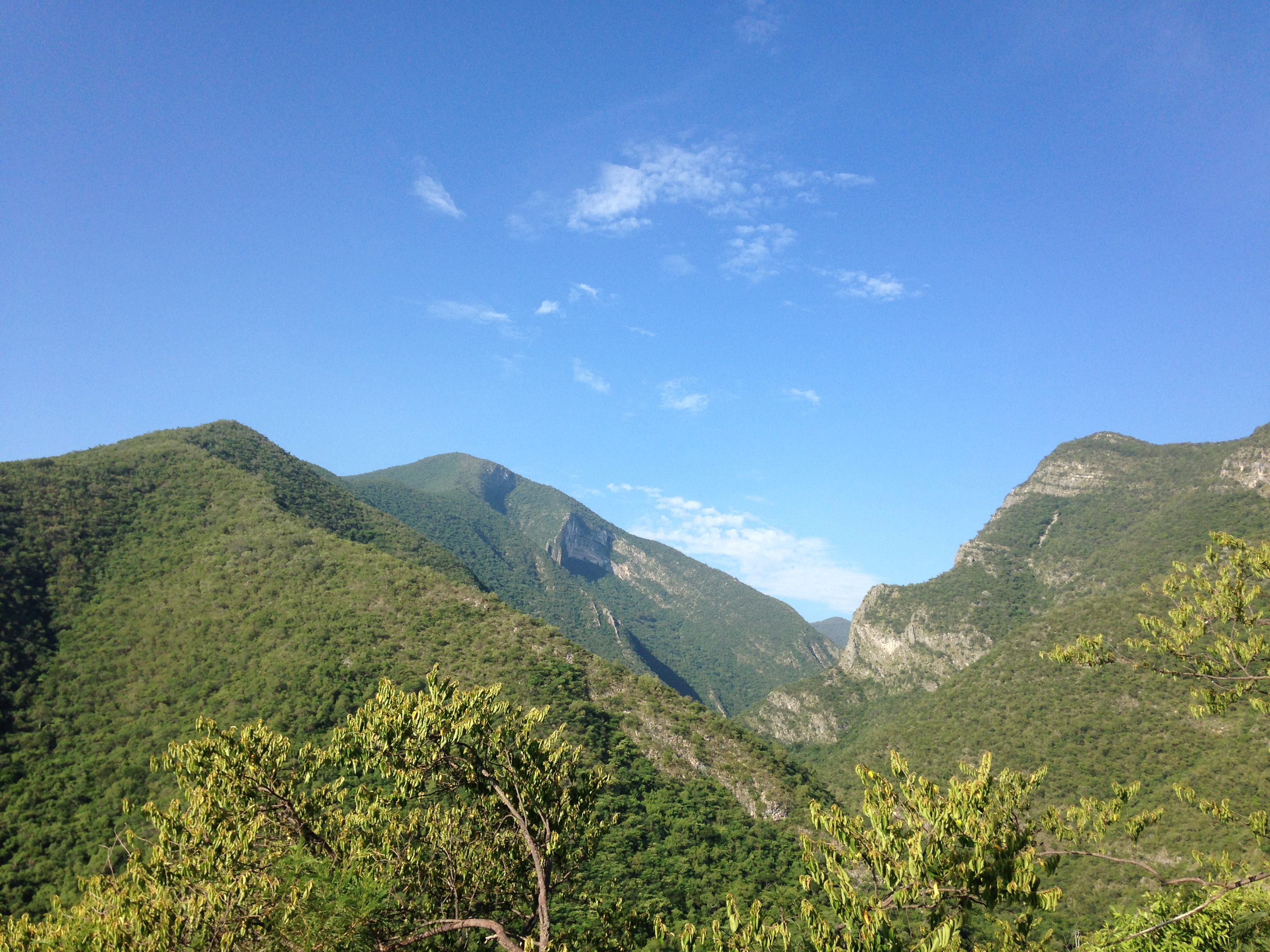|
Buddhism In Mexico
Buddhism is a minority religion in Mexico, numbering 108,701 followers or 0.09% of the total Mexican population. Tibetan Buddhism Casa Tibet México (headquartered in the Colonia Roma of Mexico City) was the third of the Tibet Houses to be created. It was founded by the XIV Dalai Lama on his first visit to Mexico. One of the main objectives of the Casa Tibet is to combat the esoteric New Age beliefs that surround eastern cosmogony and to disseminate and preserve true Tibetan culture and spirituality. The current Director, Lama Marco Antonio Karam, was chosen by the Dalai Lama to head the Casa Tibet. Another important mission the Casa Tibet participates in is the sponsoring of Tibetan children located in Dharamshala, India. In Mexico, they have given help to street children, Indigenous children and single mothers. The Casa Tibet does not proselytize, but will not refuse an individual wanting to learn about Tibetan ideology. Other denominations At a Thai Buddhist temple in ... [...More Info...] [...Related Items...] OR: [Wikipedia] [Google] [Baidu] |
Indigenous People Of Mexico
Indigenous peoples of Mexico (), Native Mexicans () or Mexican Native Americans (), are those who are part of communities that trace their roots back to populations and communities that existed in what is now Mexico before the arrival of Europeans. The number of Indigenous Mexicans is defined through the second article of the Mexican Constitution. The Mexican census does not classify individuals by race, using the cultural-ethnicity of Indigenous communities that preserve their Indigenous languages, traditions, beliefs, and cultures. As a result, the count of Indigenous peoples in Mexico does not include those of mixed Indigenous and European heritage who have not preserved their Indigenous cultural practices. Genetic studies have found that most Mexicans are of partial Indigenous heritage. According to the National Indigenous Institute (INI) and the National Institute of Indigenous Peoples (CDI), in 2012 the Indigenous population was approximately 15 million people, divided ... [...More Info...] [...Related Items...] OR: [Wikipedia] [Google] [Baidu] |
Buddhism In Canada
Buddhism is among the smallest minority-religions in Canada, with a very slowly growing population in the country, partly the result of conversion, with only 4.6% of new immigrants identifying themselves as Buddhist. As of 2021, the census recorded 356,975 or 1% of the population. History Buddhism has been practised in Canada for more than a century. Buddhism arrived in Canada with the arrival of Chinese labourers in the territories during the 19th century."Buddhism" . ''The Canadian Encyclopedia''. Modern Buddhism in Canada traces to Japanese immigration during the late 19th century. The first Japanese Buddhist temple in Canada was built at the Ishikawa Hotel in Vancouver, British Columbia, Vancouver in 1905. Over time, the Japanese Jōdo Shinshū branch of Buddhism became the prevalent form of Buddhism i ... [...More Info...] [...Related Items...] OR: [Wikipedia] [Google] [Baidu] |
Buddhism In Nicaragua
Buddhism in Nicaragua has existed since the late 19th century, after immigration from countries with Buddhist populations, mainly China. Although sources are not readily available, Buddhists are believed to constitute 0.1% of the total population in Nicaragua. History Buddhism was brought to Nicaragua in the late 19th century when the Chinese started arriving, many of which came from Guǎngdōng (广东) province. See also * Buddhism in Central America * Buddhism in Costa Rica * Buddhism in Canada * Buddhism in Mexico * Buddhism in the United States * Buddhism in Brazil * Buddhism in Argentina * Buddhism in Venezuela * Chinese Nicaraguan References External linksEl Nuevo DiarioBudismo en Nicaragua SAMU - Zen Lab Religion in Nicaragua Nicaragua Nicaragua, officially the Republic of Nicaragua, is the geographically largest Sovereign state, country in Central America, comprising . With a population of 7,142,529 as of 2024, it is the third-most populous count ... [...More Info...] [...Related Items...] OR: [Wikipedia] [Google] [Baidu] |
Buddhism In Costa Rica
Costa Rica has more Buddhism, Buddhists than the other countries in Buddhism in Central America, Central America with almost 100,000 (2.34% of total population), followed closely by Panama, with almost 70,000 (2.1% of total population). Buddhism was introduced in the country for the first time by Chinese-Costa Rican, Chinese immigrants during the early 19th and 20th century, but an important part of these migrants later became --at least nominally-- Roman Catholics due to the then very Religious Conservative, Conservative Catholic country, Catholic-lead society. But there is evidence that some of them practiced their Buddhist beliefs discreetly, for example, the testimony of writer Jorge Cardona of Buddhist altars among Chinese merchants in the early 20 century Puntarenas Province, Puntarenas. Another source of Buddhism in the country was the Theosophical Society in Costa Rica, Theosophical Society, popular among important members of the economic and intellectual elite. Among ... [...More Info...] [...Related Items...] OR: [Wikipedia] [Google] [Baidu] |
Buddhism In Argentina
Buddhism is a minority religion in Argentina, where, in addition to the majority of the Christian population, the rate of self-professed Buddhists is about 0.5%. Buddhism in Argentina has been practiced since the early 1980s. Chinese Buddhist immigrants had established their first Buddhist temple in 1986, and Korean Buddhist immigrants also founded their own temple. Since then, many groups have been giving teachings, some of them rooted in the Sōtō tradition from Japan, but also in many Tibetan institutes for the practice of meditation (Mahamudra, Dzog Chen, Lam Rim). Nowadays, many Buddhist centres have flourished and propagated widely. Buenos Aires is home to about 5,000 immigrant Buddhists and 25,000 Buddhist converts. Many organizations have cooperated to bring relics of the Buddha to Argentina. This event was supported by the Royal Embassy of Thailand in Buenos Aires. Among scholars who contributed to the spreading of Buddhism in Argentina are Samuel Wolpin, whose b ... [...More Info...] [...Related Items...] OR: [Wikipedia] [Google] [Baidu] |
Buddhism In Venezuela
Buddhism in Venezuela is practiced by very approximately 52,000 people (roughly 0.2% of the population) as of 2015. The Buddhist community is made up mainly of Chinese, Japanese, and Koreans. Most identify with the Mahayana tradition, reflecting the religious heritage of their emigrant countries. However, in the mid-1990s Keun-Tshen Goba (''né'' Ezequiel Hernandez Urdaneta), together with Jigme Rinzen, and under the guidance of Chugai Keisho (German financier né Burkhard Brauch), also a former disciple of Chögyam Trungpa founded a meditation center using the Shambhala Training method. There are Buddhist centers in Caracas, Maracay, Mérida, Puerto Ordáz, San Felipe, and Valencia. See also * Buddhism in Brazil * Buddhism in Argentina * Buddhism in Costa Rica * Buddhism in Nicaragua * Buddhism in Mexico * Buddhism in Canada * Buddhism in Uruguay * Buddhism in the United States * Buddhism in Central America * Buddhism by country References External link ... [...More Info...] [...Related Items...] OR: [Wikipedia] [Google] [Baidu] |
Buddhism In Brazil
With nearly 250,000 Buddhists, Brazil is home to the third-largest Buddhist population in the Americas, after the United States and Canada. Buddhism in Brazil consists of practitioners from various Buddhist traditions and schools. A number of Buddhist organisations and groups are also active in Brazil, with nearly 150 temples spread across the states. History Initial introduction to Brazil Buddhism was first practiced in Brazil on a very limited scale by small groups of Chinese migrants in the early 19th century. At the start of the 20th century, Buddhism was introduced to Brazil on a larger scale with the mass immigration of Japanese agricultural workers. Typically, early immigrants were not firstborn sons, who in Japan have primary responsibility for religious rituals, and monks were forbidden from migrating by the Japanese Ministry of Foreign Affairs. Thus, religion had a very small role in the lives of these first immigrants with the exception of funerary rites. They ... [...More Info...] [...Related Items...] OR: [Wikipedia] [Google] [Baidu] |
Cambodia
Cambodia, officially the Kingdom of Cambodia, is a country in Southeast Asia on the Mainland Southeast Asia, Indochinese Peninsula. It is bordered by Thailand to the northwest, Laos to the north, and Vietnam to the east, and has a coastline along the Gulf of Thailand in the southwest. It spans an area of , dominated by a low-lying plain and the confluence of the Mekong river and Tonlé Sap, Southeast Asia's largest lake. It is dominated by a tropical climate and is rich in biodiversity. Cambodia has a population of about 17 million people, the majority of which are ethnically Khmer people, Khmer. Its capital and most populous city is Phnom Penh, followed by Siem Reap and Battambang. In 802 AD, Jayavarman II declared himself king, uniting the warring Khmer princes of Chenla Kingdom, Chenla under the name "Kambuja".Chandler, David P. (1992) ''History of Cambodia''. Boulder, CO: Westview Press, . This marked the beginning of the Khmer Empire. The Indianised kingdom facilitated ... [...More Info...] [...Related Items...] OR: [Wikipedia] [Google] [Baidu] |
Thailand
Thailand, officially the Kingdom of Thailand and historically known as Siam (the official name until 1939), is a country in Southeast Asia on the Mainland Southeast Asia, Indochinese Peninsula. With a population of almost 66 million, it spans . Thailand Template:Borders of Thailand, is bordered to the northwest by Myanmar, to the northeast and east by Laos, to the southeast by Cambodia, to the south by the Gulf of Thailand and Malaysia, and to the southwest by the Andaman Sea; it also shares maritime borders with Vietnam to the southeast and Indonesia and India to the southwest. Bangkok is the state capital and List of municipalities in Thailand#Largest cities by urban population, largest city. Tai peoples, Thai peoples migrated from southwestern China to mainland Southeast Asia from the 6th to 11th centuries. Greater India, Indianised kingdoms such as the Mon kingdoms, Mon, Khmer Empire, and Monarchies of Malaysia, Malay states ruled the region, competing with Thai states s ... [...More Info...] [...Related Items...] OR: [Wikipedia] [Google] [Baidu] |
Bhikkhu
A ''bhikkhu'' (, ) is an ordained male in Buddhist monasticism. Male, and female monastics (''bhikkhunī''), are members of the Sangha (Buddhist community). The lives of all Buddhist monastics are governed by a set of rules called the pratimokṣa, prātimokṣa or pāṭimokkha, pātimokkha. Their lifestyles are shaped to support their spiritual practice: to live a simple and meditative life and attain Nirvana (Buddhism), nirvana. A person under the age of 20 cannot be ordained as a bhikkhu or bhikkhuni but can be ordained as a samanera, śrāmaṇera or śrāmaṇērī. Definition ''Bhikkhu'' literally means "begging, beggar" or "one who lives by dāna, alms". The historical Buddha, Gautama Buddha, Prince Siddhartha, having abandoned a life of pleasure and status, lived as an alms mendicant as part of his śramaṇa lifestyle. Those of his more serious students who renounced their lives as householders and came to study full-time under his supervision also adopted this lifest ... [...More Info...] [...Related Items...] OR: [Wikipedia] [Google] [Baidu] |
Tamaulipas
Tamaulipas, officially the Free and Sovereign State of Tamaulipas, is a state in Mexico; one of the 31 states which, along with Mexico City, comprise the 32 federal entities of Mexico. It is divided into 43 municipalities. It is located in northeast Mexico and is bordered by the states of Nuevo León to the west, San Luis Potosí to the southwest, and Veracruz to the southeast. To the north, it has a stretch of the U.S.–Mexico border with the state of Texas, and to the east it is bordered by the Gulf of Mexico. In addition to the capital city, Ciudad Victoria, the state's largest cities include Reynosa, Matamoros, Nuevo Laredo, Tampico, and Mante. Etymology The name Tamaulipas is derived from ''Tamaholipa'', a Huastec term in which the ''tam-'' prefix signifies "place (where)". No scholarly agreement exists on the meaning of ''holipa'', but "high hills" is a common interpretation. Another explanation of the state name is that it is derived from ''Ta ma ho'lipam ... [...More Info...] [...Related Items...] OR: [Wikipedia] [Google] [Baidu] |





